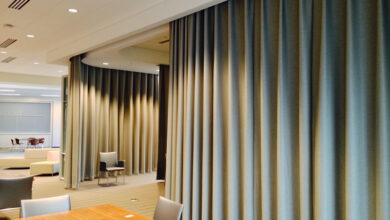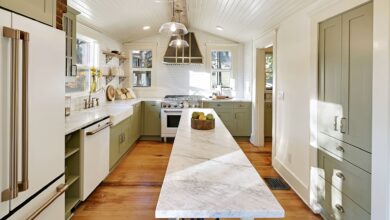Kitchen Hood Height: A Comprehensive Guide

In the sector of kitchen layout, one of the most important factors that frequently gets not noted is the kitchen hood. Also called a range hood, this equipment plays a critical role in retaining clean and safe cooking surroundings.
One of the important things concerned for effective kitchen hood height overall performance is its top. In this comprehensive manual, we will delve into the whole thing you need to realize approximately kitchen hood peak, from ultimate measurements to installation tips and commonplace mistakes to keep away from.
Why Kitchen Hood Height Matters
Before diving into the specifics of height, it’s essential to recognize why the placement of your kitchen hood is so vital. The number one function of a range hood is to ventilate the kitchen by casting off smoke, steam, odors, and airborne grease. For it to work correctly, it wishes to be placed efficaciously.
Optimal Performance
A kitchen hood that’s too excessive may not seize all the airborne contaminants correctly, at the same time as one that is too low can impede your cooking area or even pose a protection danger. Correct peak placement guarantees that the hood plays optimally, keeping your kitchen air smooth and sparkling.
Safety Considerations
Proper top placement additionally influences safety. A hood located too low may intervene together with your cooking, increasing the risk of injuries. Conversely, a hood that’s too excessive might not efficiently seize dangerous fumes, affecting your health through the years.
Recommended Kitchen Hood Heights
The perfect top for a kitchen hood height varies depending on numerous factors, together with the sort of hood, the cooking equipment, and the fashion of the kitchen. Here’s a breakdown of widespread pointers:
1. Standard Height Recommendations
- Electric and Induction Cooktops: For most electric and induction cooktops, the recommended top for the lowest of the hood is between 24 to 30 inches above the cooking surface. This variety guarantees that the hood efficiently captures warmness and smoke even as it lasts at a comfortable peak for cooking.
- Gas Cooktops: For gas cooktops, the encouraged peak is barely better, normally between 30 to 36 inches above the cooking floor. This is because of the better warmth output and increased risk of grease accumulation with fuel cooking.
2. Professional-Grade Ranges
If you have an expert-grade variety, which is often larger and more powerful than well-known residential levels, the recommended peak is typically 30 to 36 inches above the cooking surface. This better placement incorporates the expanded output and guarantees effective airflow.
3. Island Hoods
For island hoods, which are established above a cooktop in a kitchen island, the height is normally set between 30 to 36 inches above the cooking surface. Since island hoods are not hooked up against a wall, they need to be placed barely better to deal with the elevated airflow and visibility.
4. Custom Hoods
If you’re choosing a custom or designer hood, the height can range based totally on aesthetic preferences and kitchen design. However, it’s essential to seek advice from a professional to make certain that the custom hood is set up at a peak that maintains its efficiency and functionality.
Measuring for Proper Height
Accurate measurement is prime to reaching the ideal kitchen hood top. Here’s a step-by-step guide to measuring for the correct peak:
1. Measure Your Cooktop
Start with the aid of measuring the height of your cooktop or variety from the floor. This will provide you with a baseline from paintings.
2. Determine Hood Type and Specifications
Refer to the producer’s specs in your range hood. These hints regularly provide advocated peak stages primarily based on the kind of cooking equipment and hood version.
3. Consider Your Kitchen Layout
Take into consideration the overall format of your kitchen, including cabinet heights, ceiling height, and clearance across the cooktop. This will assist you in determining if any adjustments are needed.
4. Mark and Install
Once you’ve got determined the suitable top, mark the setup points to your wall or ceiling. Ensure the hood is level and securely mounted for the most desirable performance.
Common Mistakes to Avoid
When putting in a kitchen hood, heading off not unusual errors can save you from ability issues down the line. Here are a few pitfalls to look at out for:
1. Ignoring Manufacturer Guidelines
Always adhere to the manufacturer’s installation tips. These recommendations are based totally on vast checking out and are important for making sure the hood operates successfully.
2. Overlooking Clearance Requirements
Ensure there may be ok clearance between the hood and the cooktop. Insufficient clearance can hinder the hood’s capacity to capture smoke and grease.
3. Neglecting Ventilation Ducting
Proper airflow ducting is critical for the hood’s performance. Avoid using immoderate bends or lengthy duct runs, which could lessen the efficiency of the hood.
4. Choosing Aesthetic Over Functionality
While aesthetics are vital, capability should now not be compromised. Ensure that the hood’s top and layout are realistic for your cooking desires and kitchen format.
Conclusion
Selecting the proper kitchen hood top is crucial for keeping a clean and safe cooking environment. By following the endorsed height recommendations, as it should be measuring your area, and avoiding commonplace installation mistakes, you can make sure that your kitchen hood performs optimally. Whether you’re installing a widespread variety hood or a custom design, proper placement will beautify your cooking enjoy and hold your kitchen air sparkling and clean.



